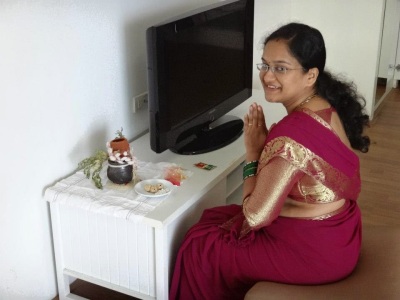तीळगुळ घ्या, गोड गोड बोला
The above script means, “Have sweet sesame seeds and jaggery laddoos and say sweet things in life”. A much needed virtue in today’s sarcastic and doleful un-human world where we do not miss out a chance to criticize someone or something. We must end our fights, our grievances and start all over again with sweetness in our hearts, that is what Makar Sankranti preaches. Makar Sankranti is a festival that teaches us to respect human life and Nature as well. It symbolizes the beginning of new harvest season,
Most Hindu festivals apart from a philosophical message also have an astronomical logic & mythological stories for their existence, so does Makar Sankranti. Let’s explore.
Makar Sankranti the very first festival of a new year. On this day the sun passes through the winter solstice from the Tropic of Cancer into the Tropic of Capricorn, the zodiac sign also known as MakarRas hence the name Makar Sankranti. This is in fact the only Hindu festival which coincides with the Gregorian calendar hence it always falls mostly either on 14 or 15 January of every year. This time we celebrate it on 15th January, 2015. Makar Sankranti has various names throughout the Indian geography and celebrated it differently but the essence is same all over respecting humanity and embracing the gift Nature offers us.
On this day the Sugad pooja is also performed. Two earthen pots one black (large) and one brown (small) are filled with the fresh produce of the season since it signifies the harvest season. So Harbara, Moong, Sugarcane pieces, Bor, etc, are placed in the black pot and til-gul ladoos are placed in the brown pot. Worship them with flowers and Haldi Kumkum.
Now let me tell you the mythological story behind this sweet festival.
Once upon a time,there was a king named Shankarasur who was very cruel and who troubled the inhabitants a lot. Hence the Gods sent Sankranti Devi to rescue the people from the wrath of this cruel king. She not only beheaded Shankarasur but also Kinkrasur who was equally vicious. That is why we celebrate Kinkrant after Sankrant.
Gastronomically this festival is all about beating the winter chills with local fresh produce. A day before Sankrant is called Bhogi. On this day the local winter veggies like green chana, drumsticks, pavta beans, etc are brewed in the pot into a hot stew with fragrant herbs and served with Jowar Roti.
You can explore some of the authentic Marathi recipes for this festival from here >> Chakali
She is one food blogger I sort to for authentic and easy Maharashtrian recipes.
The famous Til-Gul ladoos and Gul-Poli made from jaggery and sesame seeds helps the body to fight the winter by maintaining the heat quotient. They also make a good treat when married woman do Haldi Kumkum.
Now Haldi Kumkum is sort of a traditional version of the nowadays known “Kitty Party”. Married woman invite other married woman to their homes. There by honor them by marking their foreheads with Haldi and Kumkum along with gifts such as bangles, bindis , mirrors, toe-rings, etc, along with the sankranti treats of til-gul, gul-poli and halva (sugar beads). Newly wed brides who have their first Haldi Kumkum get to dress in ornaments made from these sugar beads also known as Halvyache Dagine.
I personally love this festival because this is the first festival I celebrated as a new bride and that too in Thailand. Yeahh, we were on our honeymoon then..Blushes! Once we returned I did my traditional Kitty party aka my first Haldi Kumkum with all the sugar-bead ornaments. Yup… Check out.
 |
| My First Makar Sankranti Sugad Pooja – In Bangkok, Thailand. |
 |
| Sugad:Earthen Pots with local produce and Tilgul ladoos |
 |
| हलव्याचे दागिने |
 |
| हळदी कुंकू |
 |
Wishing you and your family
Happy Makar Sankranti
from Crazy Foodies on Toes.













